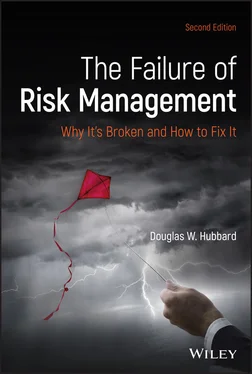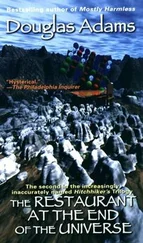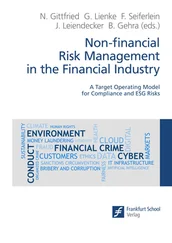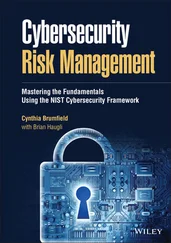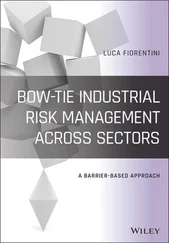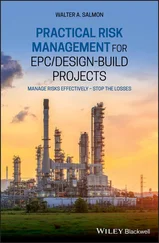1 ...6 7 8 10 11 12 ...18 By the end of the twentieth century, a fourth independent set of methods were being used as part of risk management, and these methods had almost no connection to the previous ideas developed by actuaries, economists, or engineers. Struggling to keep track of emerging risks, executives were hungry for a simple way to summarize the risk landscape, without necessarily adopting the more quantitative (and, at the time, more obscure) methods that came before them.
By the 1990s the major consulting firms promoted an early version of a common risk communication tool known as the risk matrix as well as various qualitative risk ranking or risk scoring methods. These were simple to use and simple to communicate. In some cases, pressure to adopt some sort of risk analysis method quickly encouraged the adoption of the simplest method without regard to its effectiveness. Once one approach gains momentum, prudent executives had a growing interest in using a method that everyone else was using. Every shock to the system, such as natural disasters, recessions, terrorism, emerging cybersecurity threats, and more, encouraged wider adoption of whatever simple method was gaining a foothold.
Firms were caught up in a growing “risk culture.” In response to demand for more clarity, several attempts to make so-called formal methodologies for risk assessment and risk management have evolved. Some of these methods are codified in influential standards such as the International Standards Organization (ISO) and the National Institute of Standards & Technology (NIST) in the US. More variations on these have been developed by numerous consulting firms, and many companies created customized approaches based on the same ideas.
If executives needed any more incentive to adopt risk management, new regulations continue to provide the extra push. Since 1988, the Basel I, II, and III Accords created new international standards and requirements for risk management in banking. In the United States, the Sarbanes-Oxley Act of 2002 and the President's Management Agenda (PMA) under Bush in 2001 stated sweeping requirements for risk analysis of all major government programs. All of these regulations required different organizations to adopt risk analysis methods, but without much detail, risk analysis was usually interpreted to be the simpler, qualitative methods. The European Union's General Data Protection Regulation (GDPR) in 2018 provided for the possibility of enormous potential fines for companies who have experienced breaches of personal data of the public. But its requirements for risk assessment specify only qualitative designations such as “high risk.” The Dodd-Frank Wall Street Reform and Consumer Protection Act (2009) specifically required that the Federal Deposit Insurance Commission (FDIC) use a risk matrix.
The need for risk assessment has grown much faster than the awareness of relative performance of solutions. The most popular, newer methods don't necessarily build on the foundation of earlier methods that have stood up to scientific and historical scrutiny. However, even the quantitative risk management methods used in finance revealed cracks under the light of the 2008/2009 financial crisis.
So let's try to map out this rapidly expanding “Wild West” frontier of risk management solutions. Things are moving fast, so this description will probably soon be incomplete. For now, we can examine how risk management is adopted in the modern organization, the risk assessment methods used, and the types of risk mitigation methods used.
CURRENT STATE OF RISK MANAGEMENT IN THE ORGANIZATION
Writing about the “current state” of anything in a book that gets a new edition once a decade may seem like a very low-resolution picture of reality. But the (unfortunate) slow pace of change makes the current state of risk management easier to capture even with such infrequent updates.
To get a finger on the pulse of the current state of risk management, we could rely on the anecdotes of my network of connections in risk management. And I do to some degree. But the best tool we have is structured surveys of various levels of management in organizations. My firm, Hubbard Decision Research (HDR), collaborated with The Netherlands office of the consulting firm KPMG to survey 283 organizations and risk experts from fifty-three countries across many industries. Organizations ranged in size: eighty-four had less than one hundred employees and seventy had more than ten thousand employees. Respondents represented analysts, risk managers, CEOs, and many levels in between. Our focus was to investigate details about how organizations and risk professionals actually assessed and managed risks and what the effect of those efforts were.
In addition to this survey, I have updated a summary of three major sources of surveys mentioned in the first edition of this book. We will look at some surveys conducted between 2007 and 2018 by The Economist Intelligence Unit (EIU), 1 Aon Global Risk Consulting, 2 and Protiviti. 3 And I will throw in some related observations from two other smaller surveys conducted by HDR, which asked risk management–related questions: a 2015 survey of 173 cybersecurity experts and a 2018 survey of eighty project managers. All of the surveys included responses from organizations around the world, from small to Fortune 500 companies in many industries as well as large government agencies. Here is a summary of findings:
Growth in risk management was fast but may have cooled off: In 2007, the Aon survey said 50 percent reported having a formal risk management function and 88 percent said the board was engaged in risk issues. The growth was apparently fast, for a while. The Aon 2017 survey says that 66 percent now have a formal risk function—down slightly from 2015. These numbers don't quite align with the findings of the HDR/KPMG survey, which found that of those who currently have a risk management function, 65 percent say they implemented it since 2007. (That difference could be a difference in the respondent population.) Furthermore, growth in the number of staff in those departments has leveled off according to the Aon survey.
There is support for risk management—mostly: The 2017 EIU report states that lack of support from senior management was a concern of only 21 percent in the previous year and only 15 percent expect it to be a concern in the next year. However, the HDR/KPMG survey finds that a higher proportion (31 percent) believe there is “no recognition by top management in the importance of risk assessment.”
Influence of risk management is not as high as it could be: Regarding influence, the HDR/KPMG survey finds that 67 percent say risk assessment is used to provide “some guidance” or “significant guidance” in “major decisions” whereas the 2017 EIU finds that only 47 percent say the risk function plays a role in strategic decisions.
CURRENT RISKS AND HOW THEY ARE ASSESSED
The Aon, Protiviti, and EIU surveys all asked respondents about their biggest risks. Of course, any survey about the perception regarding the biggest risks are probably transient, but here is the current snapshot.
Exhibit 2.1summarizes the top five risks in each of these surveys. All three surveys were different but note that there is a bit more agreement between Aon and Protiviti than either of those have with EIU. This may be because EIU was asking specifically about risks in the next twelve months and the other two organizations didn't specify a time frame. Perhaps the EIU respondents felt that these risks were more relevant in the very near term.
These risk-ranking surveys have been taking place for many years and will probably go on for the foreseeable future but we should also ask how organizations determined these risks were their main concerns. On that question, these three surveys did not get into many specifics. That is where the HDR/KPMG surveys tried to fill the gap. Armed with all of this research, here is what we found:
Читать дальше
